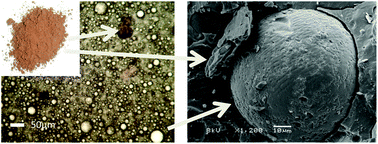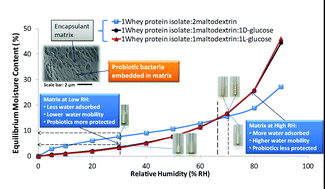The 10 most-accessed Food & Function articles in March 2013 were as follows:
Nuts, especially walnuts, have both antioxidant quantity and efficacy and exhibit significant potential health benefits
Joe A. Vinson and Yuxing Cai
Food Funct., 2012, 3, 134-140
DOI: 10.1039/C2FO10152A, Paper
Development of oral food-grade delivery systems: Current knowledge and future challenges
Revital Cohen Benshitrit, Carmit Shani Levi, Sharon Levi Tal, Eyal Shimoni and Uri Lesmes
Food Funct., 2012, 3, 10-21
DOI: 10.1039/C1FO10068H, Review Article
Antiproliferative activities of tea and herbal infusions
Fang Li, Sha Li, Hua-Bin Li, Gui-Fang Deng, Wen-Hua Ling and Xiang-Rong Xu
Food Funct., 2013, 4, 530-538
DOI: 10.1039/C2FO30252G, Paper
Anti-inflammatory activity of natural dietary flavonoids
Min-Hsiung Pan, Ching-Shu Lai and Chi-Tang Ho
Food Funct., 2010, 1, 15-31
DOI: 10.1039/C0FO00103A, Review Article
Hass avocado modulates postprandial vascular reactivity and postprandial inflammatory responses to a hamburger meal in healthy volunteers
Zhaoping Li, Angela Wong, Susanne M. Henning, Yanjun Zhang, Alexis Jones, Alona Zerlin, Gail Thames, Susan Bowerman, Chi-Hong Tseng and David Heber
Food Funct., 2013, 4, 384-391
DOI: 10.1039/C2FO30226H, Paper
Transcription profiles of LPS-stimulated THP-1 monocytes and macrophages: a tool to study inflammation modulating effects of food-derived compounds
Wasaporn Chanput, Jurriaan Mes, Robert A. M. Vreeburg, Huub F. J. Savelkoul and Harry J. Wichers
Food Funct., 2010, 1, 254-261
DOI: 10.1039/C0FO00113A, Paper
Prior supplementation with long chain omega-3 polyunsaturated fatty acids promotes weight loss in obese adults: a double-blinded randomised controlled trial
Irene A. Munro and Manohar L. Garg
Food Funct., 2013, 4, 650-658
DOI: 10.1039/C3FO60038F, Paper
The role of marine n-3 fatty acids in improving cardiovascular health: a review
Tiffany Nicholson, Haidar Khademi and Mohammed H. Moghadasian
Food Funct., 2013, 4, 357-365
DOI: 10.1039/C2FO30235G, Review Article
Black tea: chemical analysis and stability
Shiming Li, Chih-Yu Lo, Min-Hsiung Pan, Ching-Shu Lai and Chi-Tang Ho
Food Funct., 2013, 4, 10-18
DOI: 10.1039/C2FO30093A, Review Article
Characterization of polarized THP-1 macrophages and polarizing ability of LPS and food compounds
Wasaporn Chanput, Jurriaan J. Mes, Huub F. J. Savelkoul and Harry J. Wichers
Food Funct., 2013, 4, 266-276
DOI: 10.1039/C2FO30156C, Paper
Take a look at the articles, and then let us know your thoughts and comments below.
Fancy submitting your own work to Food & Function? You can submit online today, or email us with your ideas and suggestions.


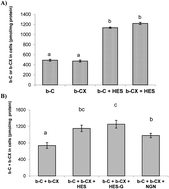
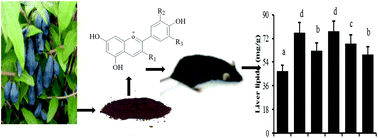
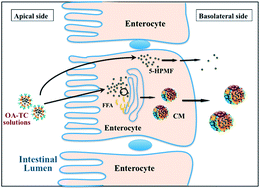










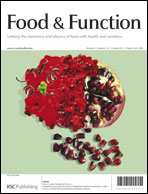 The front cover this month features work by Daniele Del Rio and co-workers from Parma, Italy. In their work they propose an in silico approach to evaluate the potential xenoestrogenic agonistic behavior of ellagitannin-derived metabolites, and highlight xenoestrogenic activity that differs depending on the chemical structure.
The front cover this month features work by Daniele Del Rio and co-workers from Parma, Italy. In their work they propose an in silico approach to evaluate the potential xenoestrogenic agonistic behavior of ellagitannin-derived metabolites, and highlight xenoestrogenic activity that differs depending on the chemical structure.
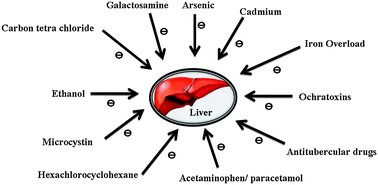
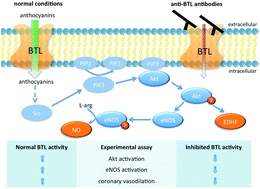

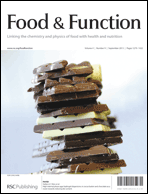 The front cover this month features work by Stefan Bon and co-workers from Warwick, UK. In their work they show that the dispersion of agar microgels into chocolate formulations can be used to reduce fat content, and also allows for the introduction of alcoholic beverages whilst preserving the desired polymorph V of the cocoa butter matrix.
The front cover this month features work by Stefan Bon and co-workers from Warwick, UK. In their work they show that the dispersion of agar microgels into chocolate formulations can be used to reduce fat content, and also allows for the introduction of alcoholic beverages whilst preserving the desired polymorph V of the cocoa butter matrix.